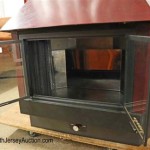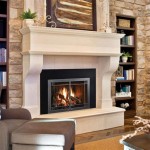Replacing a Gas Fireplace with a Wood-Burning Stove: Essential Considerations
If you're contemplating switching from a gas fireplace to a wood-burning stove, there are several crucial factors to consider. While both options provide warmth and ambiance, wood-burning stoves offer distinct advantages and require specific considerations. This article aims to guide you through the essential aspects of this transition, ensuring an informed decision-making process.
1. Building Code Compliance and Safety Regulations
Before embarking on the replacement process, it's imperative to consult your local building codes and safety regulations. Installing a wood-burning stove requires adherence to specific safety standards and clearances to minimize fire hazards. This includes maintaining proper distances from combustible materials, providing adequate ventilation, and installing smoke and carbon monoxide detectors.
2. Chimney Inspection and Installation
A wood-burning stove necessitates a properly functioning chimney. If your existing gas fireplace doesn't have a chimney, you'll need to have one installed. The chimney must be inspected and cleaned regularly to ensure it's free of obstructions and potential fire hazards. A professional chimney sweep can perform this inspection and recommend necessary repairs or modifications.
3. Ventilation and Airflow
Wood-burning stoves require a dedicated source of combustion air. This air is typically drawn from outside the home to ensure adequate oxygen supply for the fire. Proper ventilation is essential to maintain the stove's efficiency and avoid smoke buildup in your living space. Consulting with a qualified HVAC professional is advisable to determine the appropriate ventilation system for your home.
4. Stove Selection and Installation
Choosing the right wood-burning stove for your needs is crucial. Consider the size of your room, heating requirements, and aesthetic preferences. A reputable stove dealer can guide you in selecting a stove that meets your specific requirements. Professional installation is highly recommended to ensure proper functioning, safety, and compliance with building codes.
5. Fuel Considerations
Unlike gas fireplaces, wood-burning stoves require a constant supply of fuel. Seasoned firewood is the most suitable fuel, as it provides consistent heat output and minimizes smoke production. Properly seasoned firewood should have a moisture content below 20% to ensure efficient combustion. Storage space for firewood is also a consideration, as a dry and sheltered location is necessary to prevent rot and ensure the wood burns efficiently.
Conclusion
Replacing a gas fireplace with a wood-burning stove can enhance the ambiance and warmth of your home. However, it's essential to approach this transition with careful planning and consideration of essential factors such as building codes, chimney requirements, ventilation, stove selection, and fuel supply. Consulting with qualified professionals throughout the process will ensure a safe, efficient, and enjoyable wood-burning experience in your home.

Replacing A Gas Fire With Wood Burner

Do You Want To Replace Your Gas Fire With A Woodburner

Do You Want To Replace Your Gas Fire With A Woodburner

Converting A Fireplace To Wood Burning Stove Chesneys

Replacing A Wood Burning Stove With Gas Simon Turner Showrooms In Devon

Is It Time To Replace Your Old Gas Fire For A More Efficient Wood Burning Stove Alfred Poppins

Converting A Fireplace To Wood Burning Stove Chesneys

Want To Convert Gas Wood Fireplace Full Service Chimney

Replace Gas Fire With Woodburner In North Petherton Cosy Stoves

Can I Swap A Gas Fire For Woodburner
Related Posts








